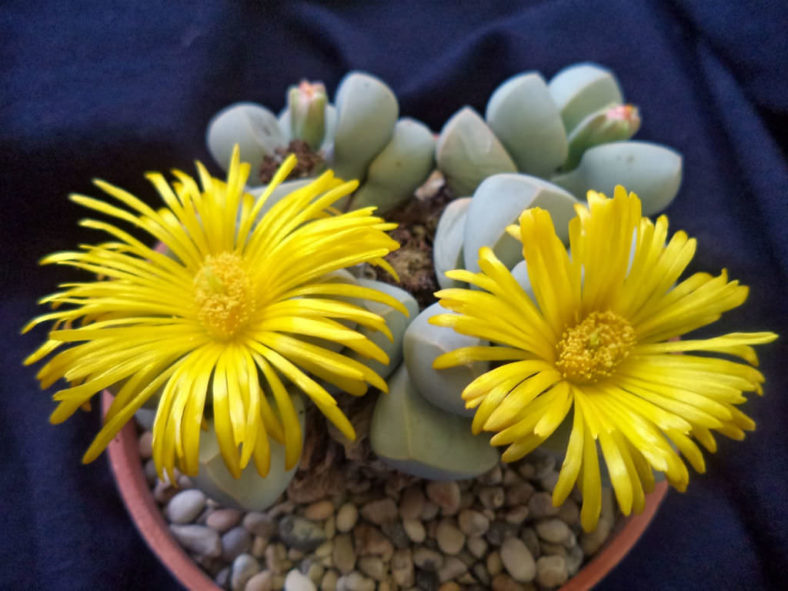Scientific Name
Lapidaria margaretae (Schwantes) Dinter & Schwantes
Common Name(s)
Karoo Rose, Kangaroo Rose
Synonym(s)
Mesembryanthemum margaretae, Argyroderma margaretae, Argyroderma roseatum, Dinteranthus margaretae
Scientific Classification
Family: Aizoaceae
Genus: Lapidaria
Etymology
The specific epithet "margaretae" (pronounced "mar-GAR-et-tay") honors Margarethe Friedrich, a German teacher living in the Namibian town of Warmbad, who discovered this species.
Origin
Lapidaria margaretae is native to dry areas in southern Namibia, particularly around Warmbad, as well as in the adjacent Northern Cape areas of South Africa.
Description
Lapidaria margaretae is a beautiful, dwarf succulent that forms rosettes of 2 to 4 pairs of thick, fleshy leaves. It can form clumps of up to 3 rosettes with age. The leaves can grow up to 0.8 inches (2 cm) long and 0.4 inches (1 cm) wide.
The solitary flowers are yellow, bloom from summer to fall, and open during the day, reaching a diameter of up to 2 inches (5 cm).

How to Grow and Care for Lapidaria margaretae
Hardiness: USDA hardiness zones 9b to 11b: from 25°F (-3.9°C) to 50°F (10°C).
Mesembs are primarily adapted to relatively predictable rainfall patterns rather than extreme drought and irregular rainfall. Total rainfall may be extremely low, but water is available at least seasonally or through fog and condensation. This leads to or allows plants that are not especially large, and sometimes very small, which affects how they need to be treated in cultivation.
The basics of care are simple: free-draining soil, plenty of sun and ventilation, and regular light watering in the right season. Yet the difficulties are endless, trying to adapt to the Mesembs' adaptability and follow their growth habits in your particular conditions.
These plants require a loam-based compost with extra drainage material such as horticultural grit or perlite. They all like good light conditions and plenty of ventilation.
Some are relatively cold-hardy and can even survive mild winters outside. Most will survive temperatures down to the freezing point. Some Mesembs begin to grow in the fall as the temperature drops and the days get shorter.
Learn more at How to Grow and Care for Mesembs.
Links
- Back to genus Lapidaria
- Succupedia: Browse succulents by Scientific Name, Common Name, Genus, Family, USDA Hardiness Zone, Origin, or cacti by Genus
Photo Gallery
Click on a photo to see a larger version.


